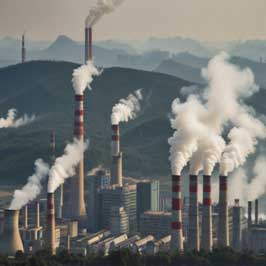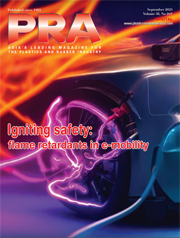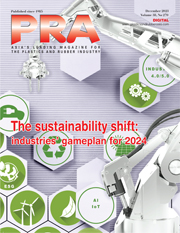Country Focus; China: breaking the high carbon emissions cycle with EVs
China leads in global carbon emissions reduction as it overcomes challenges in its pursuit of cleaner air and sustainability by transforming its car industry and increasing the adoption of new energy vehicles, says Angelica Buan in this report.
According to the US Energy Information Agency (EIA) findings, global carbon emissions have not yet achieved the COP28 target and Paris Agreement goals, such as limiting global temperature rise to 1.5°C. Despite growing investments in and adoption of clean energy technologies and services, carbon emissions growth has slowed.

Investments in clean energy technologies rose by almost 50% to reach US$1.8 trillion between 2019-2023, as reported in the IEA’s Clean Energy Market Monitor report from March 2024.
Total capacity deployment for solar and photovoltaic (PV) technologies also saw a significant increase in 2023, notably, electric vehicle (EV) sales surged by 35%, reaching 14 million cars.
As a result, EVs accounted for one in every five vehicles sold globally in 2023. The IEA finds that most of this deployment has taken place in China and developed economies. These countries were responsible for 90% of the new solar and wind power capacity additions and 95% of global EV sales.
China's emissions challenge

China's carbon emissions have soared in tandem with its economic expansion, fuelled primarily by its heavy reliance on coal for energy generation and industrial production. The nation's emissions have made significant contributions to global greenhouse (GHG) gas levels, exacerbating the climate crisis and posing serious environmental and public health risks domestically.
According to Climate Watch, China is a major carbon emissions emitter, accounting for a total share of 25.88%. Its use of coal still dominates electricity generation at 64.3%, with renewables only accounting for 27.7% share in electricity generation, thus keeping its carbon emissions high.
Despite making strides in renewable energy deployment, particularly in wind and solar power, China's carbon emissions remain stubbornly high. The transportation sector, in particular, has emerged as a major contributor to the nation's carbon footprint, propelled by the rapid growth of vehicle ownership and urbanisation. Addressing this challenge requires innovative solutions that not only reduce emissions but also promote sustainable economic development.
Nonetheless, China has made commitments to peak CO2 emissions before 2030 and achieve carbon neutrality before 2060. According to United Nations Climate Change (UNCC) data, China takes to lowering its CO2 emissions per unit of gross domestic product (GDP) by over 65% from the 2005 level.
Among China’s measures towards the net-zero direction is an increased focus on large-scale new energy development. Development of green and low carbon industries such as new energy vehicles (NEVs) is taking centre stage.
Enabling change on a policy level
China has positioned itself as a global leader in the production and deployment of EVs, and has in recent years, heavily invested in charging infrastructure to accommodate the increasing number of EVs.
Furthermore, China is ramping up efforts to improve its transportation network, underscored by the implementation of multi-modal options and an increase in the use of railways and waterways. These efforts aim to reduce energy consumption and carbon emissions.
Such steps will focus on promoting NEVs and vessels, advancing intelligent transportation systems, electrifying railways, constructing hydrogen filling stations, and normalizing the use of shore-end cables at ports.
Additionally, China focuses on expediting the development of a convenient and efficient battery charging and swapping network. Energy efficiency standards and labelling for vehicles and vessels will be upgraded, while older, high- emission vehicles and vessels will be gradually phased out.
Driving sustainable mobility with new energy vehicles
NEVs encompass a range of electric and hybrid vehicles that utilise alternative energy sources, such as electricity, hydrogen, and biofuels, to power their propulsion systems. These vehicles offer a cleaner and more environmentally friendly alternative to traditional internal combustion engine vehicles, significantly reducing greenhouse gas emissions and air pollution.
According to UNCC data, China’s push for NEV industry development has been bolstered by issuing parallel management measures for average fuel consumption and NEV points of passenger vehicle enterprises, as well as establishing a mechanism wherein traditional fuel vehicle manufacturers repay NEV manufacturers.
Undoubtedly, the NEV industry has transitioned from its introductory phase to a period of growth, ranking first in the world in both production and sales. In 2019, there were 3.81 million NEVs in China, marking a 46% increase over the previous year. Additionally, guidance has been provided to allay the automotive industry improve energy- saving technology.
(PRA)SUBSCRIBE to Get the Latest Updates from PRA Click Here»





